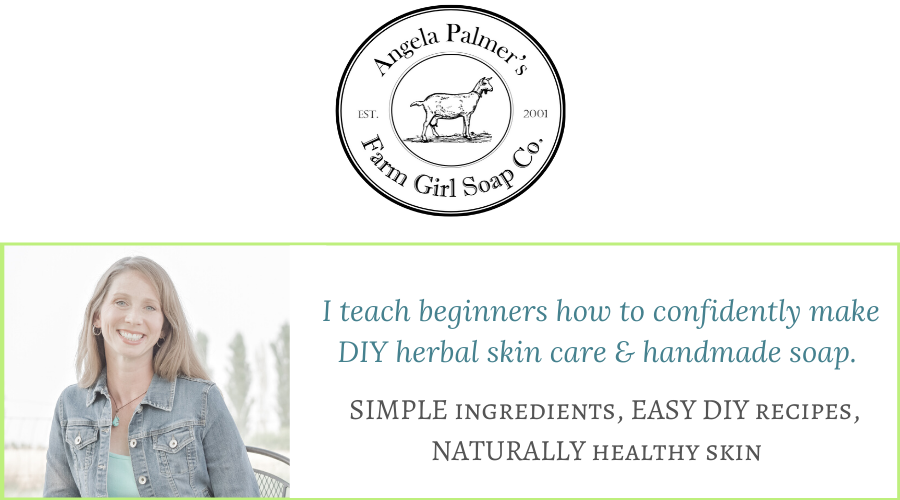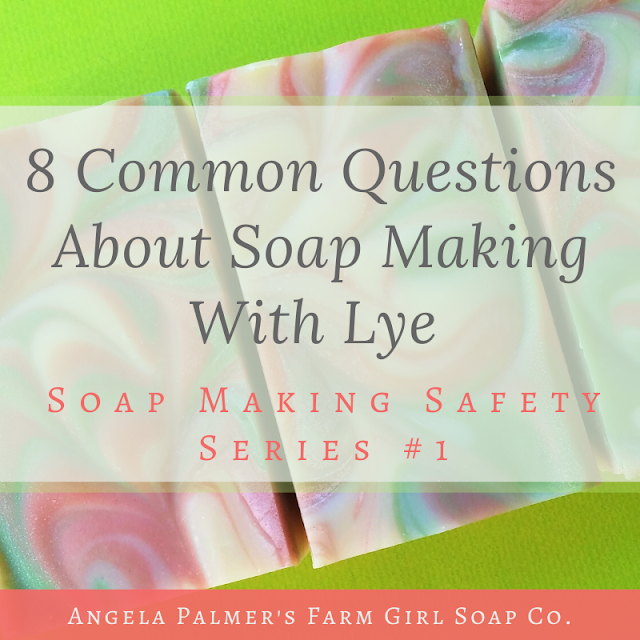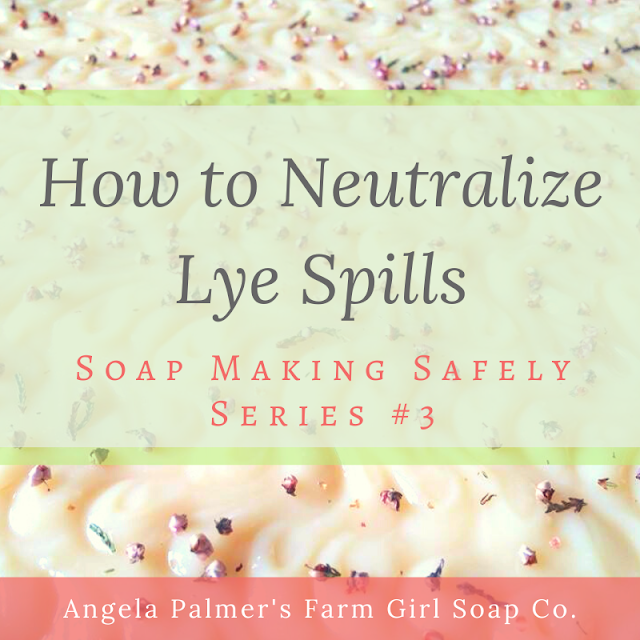How To Make Your Own Soap: 8 Common Questions About Making Soap With Lye
So, you're ready to learn how to make your own soap. But making soap with lye... kinda scares you.
I had the same fears, friend! I literally thought I was going to burn the house down, so I put off making that first batch for ages. (Once I finally did it, though, I realized it wasn't that scary.)
If I had been more familiar with lye, and how to work with it, it would have gone a long way to helping me feel less nervous and more comfortable. So that's what I'm aiming to do here, for you, before you start your first batch of homemade cold process soap.
Here are the most common questions about making soap with lye.
(If you have a question that isn't answered, please feel free to ask me by posting a comment on my Facebook page or in the comment section at the end of this post. I want to help you get soaping!)
This post contains affiliate links. As an Amazon Associate I earn from qualifying purchases. This means I may earn a small commission—at no extra cost to you—from any sales made through these links. I only recommend products that I personally use and love!
What is lye?
Lye is a caustic that today is most often used as a drain opener (and is one of the key ingredients in Drano.)Although it sounds like a horrible addition, it's a necessary ingredient for making handcrafted soap. It's used to saponify the oils, or chemical change them from oil into lovely soap.
When cold process soap is properly made, there won't be any lye left in your finished soap bars. In fact, homemade soap is gentler and better for your skin than most store-bought detergent bars.
Can I make cold process soap without lye?
It's not possible to make cold process soap without lye. But don't worry. So long as you're careful it's perfectly safe.If you use bleach in your home safely, or if you pump gas into your car safely, you can use lye safely.
Lye isn't inherently more dangerous than other common caustics we use daily. It's just that you're unfamiliar with it, and unfamiliarity breeds nervousness.
As long as you follow proper soap-making safety guidelines you will be able to make soap without any problems.
If you're not comfortable using lye in your soap making right now, there is another way to make handmade soap. It's called the melt and pour method. (Check out this post for more info: Melt and Pour Soap Making for Beginners.)
What type of lye do I need for making soap?
You must only use 100% lye in your soap making. If the package does not specifically say 100% lye, or 100% sodium hydroxide (the chemical name for lye) you should not use it.The most common brands you'll find locally are Roebic or Rooto.
Do not use drain openers, like Drano. These products may contain lye, but they also contain other chemicals that would be dangerous in your soap. They are not interchangeable with lye.
Where can I buy lye for making soap?
Lye is sold at the hardware store next to the drain cleaners (another big reason why you must check the label for 100% lye, or 100% sodium hydroxide. You don't want to accidentally purchase the wrong product.) I'll buy lye from the hardware store in a pinch.The best option is to get your lye directly from soap making suppliers online.
This way you'll know you're getting the right product that is safe to use for soap making.
Lye can be bought at soap making suppliers such as Bramble Berry, Wholesale Supplies Plus, and Chemistry Store.
I most often buy Essential Depot 100% pure lye; it's food grade and works great.
Shopping at soap suppliers online takes some of the worry out of buying lye, especially for the new soap maker. And while you're shopping, you can order any oils, molds, and fragrances you may need too.
At my local store, they keep lye behind the counter and I have to show my ID before they'll sell it to me. What gives?
If you can't find 100% lye on the shelf at your local hardware store, ask if they have it behind the counter. And, if they do, be prepared to also show your ID.Besides soap making, lye can be used in the manufacture of illicit drugs (chalk that one under who knew?)
Even if it's on the shelf, I always like to tell the cashier what I'm using it for. It saves me from those funny looks I get when I'm buying several canisters of the stuff and nothing else.
Save this article to Pinterest!
How did they make soap before you could buy lye at the store?
Our pioneer ancestors used to make their own caustic, called potash lye, using wood ash and water, but it's a long and arduous process.The end result of potash lye can be of varying strength, so you never quite know exactly how much you need in your soap batch. This is why some batches of soap from the bygone days where harsh enough to tan the skin off your body, and why old time lye soap got bad name.
If you're curious, this article from The Spruce Crafts has some great info on how wood ash lye is made.
Can I make my own caustic for soap making?
Some hard core soap makers still create their own caustic like the pioneers did. So, if you really really want to make your own lye for your soap, you can. But there's no way to gauge just how strong your homemade caustic is, which can leave you with lye-heavy bars.It's really much easier (and safer) to buy lye. I've made soap for years, and have never made my own lye. And, unless the apocalypse hits and I'm in desperate need of some soap, I never will make my own lye.
Yikes! The warnings on the lye canisters look scary!
Yeah, they do. But try not to let them frighten you. Sure, lye is caustic and can be harmful if handled improperly but it's not anything to be scared of.Have you ever used Drano on a slow drain? Then you've already worked with lye. And you did it with nary an incident.
You might be surprised to learn that olives and pretzels are given a lye-water bath. And we eat those!
Handle lye carefully and use precautions, but don't let the warnings stop you from making soap. You can do it!
Once you've got a batch or two under your belt, you'll feel much more comfortable and realize that working with lye safely isn't all that terrifying.
Get the lye handling safety checklist and cold process soap making cheat sheet.
Keep all the lye safety info and step-by-step soap making instructions at your fingertips with this printable cheat sheet. I'd love to send it to you! Just enter your name and email below.
This post is Part 1 of the Farm Girl's Soap Making Safety Series.
Be sure to check out the other posts in this series and ready to make your own soap from scratch:
- Soap Making Safety Series #2: 7 Must-Know Rules to Safely Use Lye
- Soap Making Safety Series #3: How To Safely Neutralize Lye and Handle Lye Spills
- How To Make Cold Process Soap: Step-by-Step Instructions
- Simple 2-Oil Cold Process Soap Recipe for Beginners
Want to learn how to make even more DIY skin care and green beauty products with simple kitchen ingredients?
You'll love my FREE e-course! Enroll in Handmade Skin Care for Beginners






